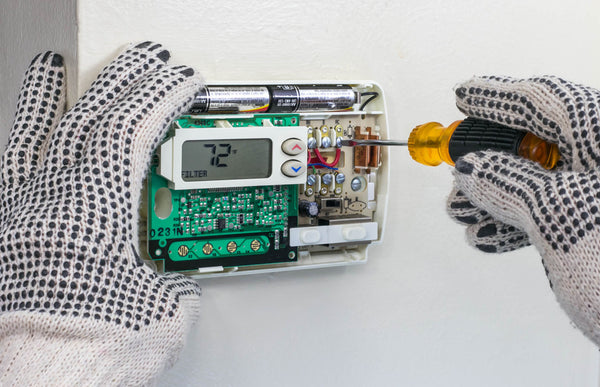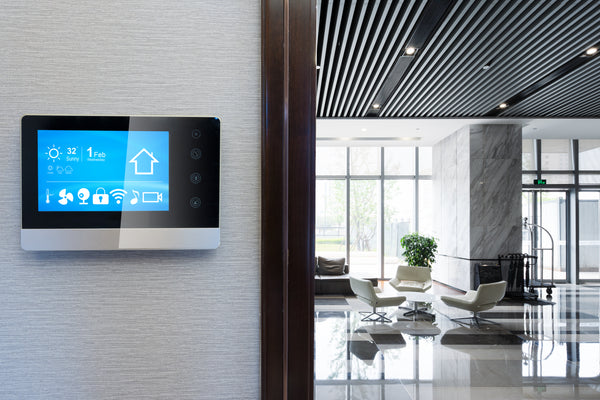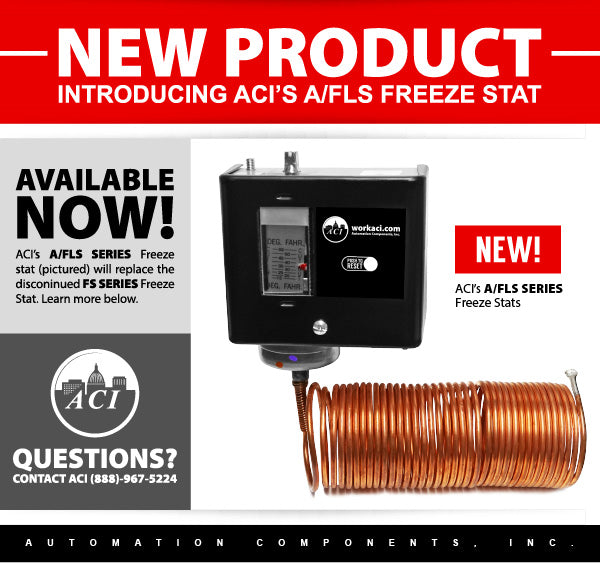
There are loads of options for thermostats available on the market nowadays. Whether you are looking for a non-programmable thermostat or a smart thermostat, you are bound to find one suited to your needs. When it comes to choosing a baseboard heater thermostat, however, you won't have a lot of options to choose from. The reason for this is that baseboard heaters are line voltage systems that use direct electricity to heat your rooms. Only about 10% of homes are using these kinds of electric heating systems. So, let's dive in and learn everything you need to know about electric baseboard heaters.
What Are Electric Baseboard Heaters?
Electric baseboard heaters are heaters that sit directly on the floor or a few inches above the floor and are either convection or hydronic-powered. Convection baseboard heaters transmit electric currents through wires encased in piping whereas hydronic baseboard heaters draw water from your water heater into pipes installed in the baseboard heater.
Electric baseboard heaters range from 500 watts to 2000 watts in power and can heat about 50 to 200 square feet of space. This type of heater can be used to heat the whole house and rooms or as supplemental heating in offices and hallways.
Baseboard heaters are designed to give warmth to the room without using a lot of electricity. This means you can save a considerable amount on energy bills. They are also perfect to install in rooms that are hard to keep warm such as the basement or the interior garage. These areas are known to be very drafty because cold air from the outside tends to get inside and the temperature drops dramatically as a result of this. With baseboard heaters, you won't need to install an expensive heating system, which again, saves you a lot of money.
The placement of baseboard heaters along the bottom of walls is strategic, leveraging the natural phenomenon of heat rising. By producing heat at floor level, the warm air ascends, effectively heating the space between the floor and ceiling where it is most beneficial.
Shop for hundreds thermostat models today at Blackhawk Supply store!
BROWSE THERMOSTATSHydronic vs Electric Baseboard Heaters
In addition to electric baseboard heaters, there are other varieties, such as gas and hydronic baseboard heaters. Hydronic heaters circulate hot water through copper coils in the baseboard units, with the water typically heated by the home's boiler system.
One of the key advantages of electric baseboard heaters is their installation under windows and along exterior walls. This allows the heaters to counter the cold air from windows and address the areas with the most heat loss. Moreover, each electric baseboard heater has its own thermostat, allowing for individual temperature control in different rooms. This can be especially useful for catering to varying temperature preferences among household members, and for managing heating in rooms based on their usage and susceptibility to drafts.
Many consider baseboard heaters as the most efficient type of heater but they still must be used with a thermostat to control the temperature.

Smart Thermostats and Baseboard Heaters
Smart thermostats are home devices that control your heating and cooling system automatically. They can schedule heating and cooling and intelligently learn your patterns and preferences so they can automatically adjust the temperature accordingly.
A smart baseboard heater thermostat can be an effective and efficient way to upgrade your electric baseboard heater. However, not all smart thermostats are compatible with your home's system. It's important to recognize that baseboard heaters require a line voltage, or high voltage, thermostat with either 120 or 240 volts of electricity. This is in contrast to central heating systems like a gas furnace or hot water boiler that are controlled by a low voltage, 12 or 24-volt thermostat.
There are several ways to determine what type of system you have and which type of smart thermostat upgrade is right for you. To start, consider how your home is being heated and if it's through an electric source such as baseboard heaters; this will indicate the need for a line voltage model. Additionally, you can check the label on your current baseboard heater thermostat model and look at the number of wires coming from it – line voltage requires fewer thick wires than its low voltage counterpart.
Smart thermostats connected to baseboard heaters provide the best opportunity for saving money and reducing your energy consumption.
Relay, Transformer, and Smart Thermostat for Electric Baseboard Heaters
Most brands on the market nowadays sell low-voltage smart thermostats which only use 24 volts. Electric baseboard heaters work with line-voltage thermostats, which use 120 to 240 volts. If you hooked up a low-voltage thermostat to your electric board heater then it would fry the thermostat.
To fix this, you will need to install a transformer in order to convert the line voltage power into low voltage power and a relay to act as a bridge between the thermostat and the heater, allowing the low voltage thermostat to control the line voltage heater. Keep in mind that you need a relay and a transformer that is properly sized in order for this system to work. You will need to consult the manufacturer of your thermostat, transformer, and relay in order to get this right.
Choosing a Smart Thermostat
You can opt to use relays and transformers to convert the high-voltage energy from your electric board heater to work with your low-voltage smart thermostat. You will also need professional input in order to get the wiring right. This obviously requires a lot of work.
As mentioned at the start of this article, there are limited options for smart thermostats for baseboard heaters. But line voltage smart thermostats do exist. Now, line voltage smart thermostats are available for you to purchase from several brands. If you are looking for smart thermostats and other HVAC supplies, visit Blackhawk Supply and browse through our catalog.
Here are a few things to consider before buying a line-voltage smart thermostat.

Identify the Units that Require Line Voltage Thermostats
Line voltage thermostat only works on electric resistance heaters. These include electric baseboard heaters, wall convectors, fan-forced wall convectors, and heaters installed under the floor.
Fan coil heaters do require a high-voltage thermostat but they also need multi-speed fan control. As of today, there are no line voltage smart thermostats that are capable of separately controlling a multi-speed fan. Therefore, if you have fan coil heating units inside your house, line voltage smart thermostats won't work with them.
Know How Many Thermostats You Need
Each of your heaters will need its own thermostat in order for smart control. A home that is heated by electric resistance heat approximately has at least 5 different heaters installed in different areas of the house. All of these heaters will need their own thermostat so the more heater you have, the more smart thermostats you have to buy.
If you need to buy more than five smart thermostats for your home, you might become wary of the price. However, manufacturers are aware of this and most brands have priced their products accordingly. This is why a line voltage thermostat is about half the price of a low voltage one.
Wireless Baseboard Heater Thermostat Options
WiFi smart home devices require a lot of power. For this reason, many homeowners don't want to go for a Wi-Fi-enabled thermostat because it consumes more energy instead of saving some. However, a line voltage thermostat won't have this problem because it gets its power from the main line. Smart thermostats that have wireless capabilities will allow you to control them remotely from your smartphone.
Single Pole or Double Pole Electric Baseboard Heater Thermostat
For those who are unfamiliar with the term, a "pole" refers to the number of separate circuits in that the switch operates off one circuit. A single pole line voltage thermostat operates on one circuit. This means that the power to the unit can only run in one direction and can't be turned off completely unless you shut the power from the breaker. On the other hand, double-pole thermostats operate in two directional currents. This means that they can be turned off completely.
Installation
It takes to match only two wires (if you have a single pole thermostat) together to install smart thermostats. But these wires run on a high voltage and can give shocks that are dangerous. If you plan on doing the installation on your own, make sure to turn the power off first.

Benefits of Smart Thermostats for Baseboard Heaters
There are many benefits of a smart baseboard heater. They elevate comfort levels, are user-friendly, financially sound, remote control operated, and integrate with your other smart devices at home.
#1. More Comfort
Our comfort depends on the temperature of our rooms. Smart thermostats for electric baseboard heaters allow you to have total control of how you heat each room in your house individually to maximize comfort without high energy consumption. They can be programmed to entirely suit your needs at every given time.
#2. Financial Efficiency
As we mentioned above, wasting energy is a big concern for homeowners these days. Many people turn to smart devices to save on energy consumption costs. It is reported that with an electric baseboard heater thermostat, people can save more than a quarter on their electricity bill while remaining 100% comfortable doing so.
#3. Remote Control
Smart thermostats for baseboard heaters are easily programmed and can be controlled remotely with simply a WiFi connection. This allows you to schedule when you start electric baseboard heating a specific room and allows you to adjust accordingly. With a baseboard heater thermostat, you can also monitor your energy usage, making it easier to save on energy costs.
#4. Easy to Use
Smart devices are known for their user-friendliness. Using apps in tandem with your smart thermostat for electric baseboard heaters will ensure that you don't have to wrestle with complicated instruction manuals or have an engineering degree to keep you comfortable throughout the year.
#5. Smart Home Integration
One of the many benefits of a smart thermostat for a baseboard heater is that it can integrate with ease with the rest of your smart home. In this case, it is important to choose a thermostat that is compatible with the other smart devices in your home. And with some advanced smart home systems integrations, you can even make these smart thermostats work over voice control!

#6. Heating Scheduling
Scheduling and controlling the heating of your home has never been easier than with a smart thermostat designed specifically for baseboard heaters. Instead of struggling to figure out a complex programmable thermostat, you can set up custom schedules or use preset schedules right in the user-friendly app. This way, you won't be wasting energy when no one is at home or in certain rooms, such as late at night.
Customizable schedules are great for plenty of reasons. They help reduce your monthly electric bill, while also keeping your home just the right temperature at all times. Rather than waking up cold or feeling stuffy, you can easily set up the perfect temperature settings for your morning routine directly from the app. Plus, with more advanced features like vacation mode, geofencing, and motion detection sensors, you don't even have to think about changing the temperature — your thermostat will do it automatically depending on whether someone is home or not.
#7. Access to Electricity Usage Data
In addition to the many benefits of having a smart thermostat for electric baseboard heaters, accessing energy usage data is invaluable. This data allows homeowners to better understand their energy consumption and make informed decisions about how to reduce their energy costs. For example, by tracking usage in each room, it's easy for homeowners to see if certain rooms are using more energy than others - this could be an indication that further insulation or window sealing might be needed in those areas.
Furthermore, this provides an overview of your home's energy use as a whole, allowing you to easily observe how much energy is being used for the house's electric heat system. This is incredibly valuable information that can be used to create smarter thermostat schedules and make more efficient use of your hard-earned dollars. Not only does access to this data give homeowners insight into where they're losing money due to inefficient heating practices, but it also allows them to find creative solutions to save money even further - such as raising the temperature on the thermostat by just one degree as part of an overall strategy for improving efficiency.
Conclusion
If you are looking for a thermostat for electric heaters, or any other kind of thermostatic equipment for your home, office, or plant, choose from a variety of high-quality thermostats that are sure to be the perfect fit for your baseboard heater. Contact us for additional information!





